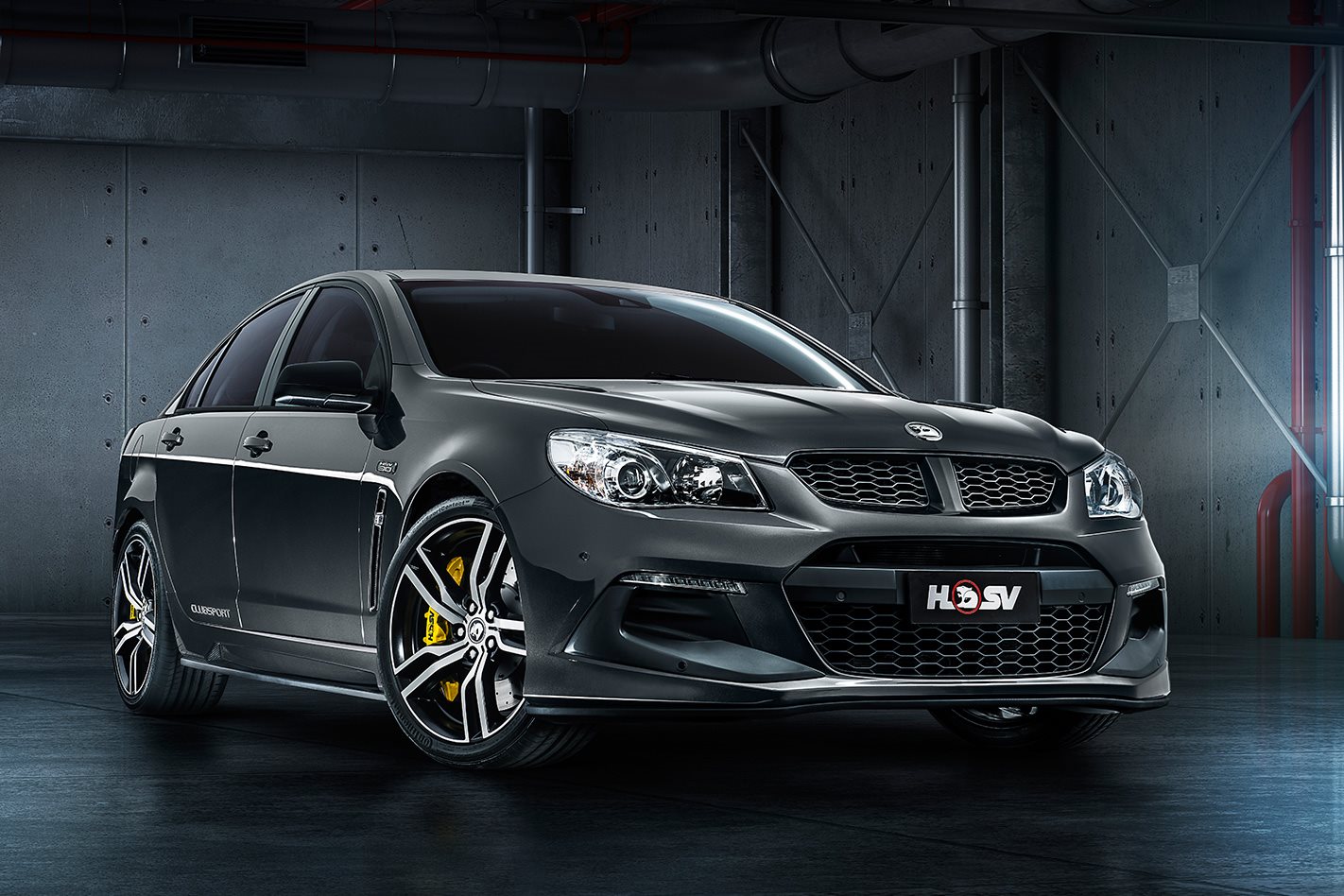
In our Fast Facts series, WhichCar delves deep into the history of automotive brands to bring you fascinating facts and intriguing information.
Here we focus on Holden Special Vehicles (HSV), a company that emerged from Holden’s famous fall-out with racing legend Peter Brock to build some of Australia’s most notable performance cars, but now finds itself in uncertain times.
FROM HDT TO HSV
When racing legend Peter Brock and Holden split acrimoniously in 1987 over the controversial HDT Director (see our Holden Fast Facts), Holden Special Vehicles (HSV) became the local manufacturer’s new performance partner late the same year. The company was a joint venture established by GM Holden and Scot Tom Walkinshaw’s eponymous racing group, TWR.
GREAT SCOT
Walkinshaw had already made his mark in Australia two years earlier. The 1984 European Touring Car champion took his TWR team to the 1985 Bathurst 1000 with a pair of XJS Jaguars, and put his on pole. While Walkinshaw finished third, the other car took victory in the hands of Australian John Goss and German Armin Hahne.
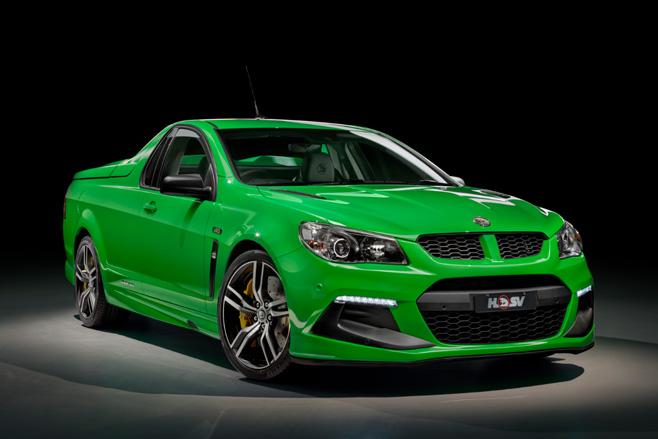
BAT-PIG?
HSV’s first assignment in its new partnership was to develop the VL Commodore SS Group A for 1988 as a homologation model for Holden to race. Its pronounced rear spoiler and wild body kit divided opinion, with nicknames ranging from the ‘Batmobile’ to the more derogatory ‘plastic pig’.
Motorsport success for the model also known as the ‘Walky’ came with victory at the 1990 Bathurst 1000. The first vehicles from HSV as we know it today appeared the same year – the SV88 that was based on the Calais and featured a 136kW 5.0-litre V8.
HOT FOURS
HSV has made its name primarily building faster, meaner versions of V8-powered Commodores, though as early as 1988 it flirted with smaller, four-cylinder models – in the form of the Astra-based SV1800. Only 65 were built in a time when keen Australian drivers remained focused on rear-wheel-drive large cars.
It revisited the idea again, in 2006 with the Astra VXR; a turbocharged hot-hatch that again used a Holden small hatchback as its basis. While hardly a showroom sensation, it at least hung around for three years and the esoteric pocket rockets appear to be growing in desirability.
CLUBBIE TIME
The Clubsport name that was last used with the introduction of the 2016 Gen-F R8 made its debut in 1990, along with HSV’s first adoption of a Commodore Ute – with the Maloo.
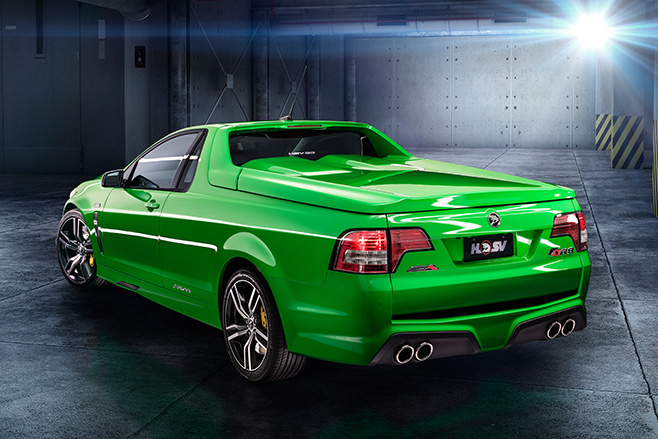
FAST LUXURY
After using the Calais as the basis for its first car, the SV88, and then the Senator from 1992, HSV gave its attention to Holden’s long-wheelbase luxury cars, the Caprice and Statesman. There were numerous HSV Statesman variants – 5000i, SV93, 215i – before the most upmarket HSV adopted the fine-wine-inspired Grange name in 1996.
LAST OF THE LOCAL V8s
HSVs lost their Aussie hearts after 1999, when the XU8 195 became the last model to feature a locally built V8. Henceforth, V8s were imported in various guises from Holden’s US parent company General Motors – with mostly modified versions of engines that appeared in cars such as the Chevrolet Corvette and Cadillac CTS-V.
ON ALL FOURS
HSV’s first flirtation with all-wheel drive was a short-lived, cosmetically tweaked version of the Holden Jackeroo, though it made a more committed effort a decade later with the Avalanche twins. The Avalanche was based on Holden’s Adventra LX8, while the donor vehicle for the XUV variant (for X-treme Utility Vehicle) was the Crewman Cross 8 four-door ute.
HSV’s 5.7-litre V8 produced more power and torque to go with a more muscular interpretation of the Holden’s bodywork. A year later, the 2004 Coupe 4 became the brand’s first all-wheel-drive car, though it was less than a stellar sales success.
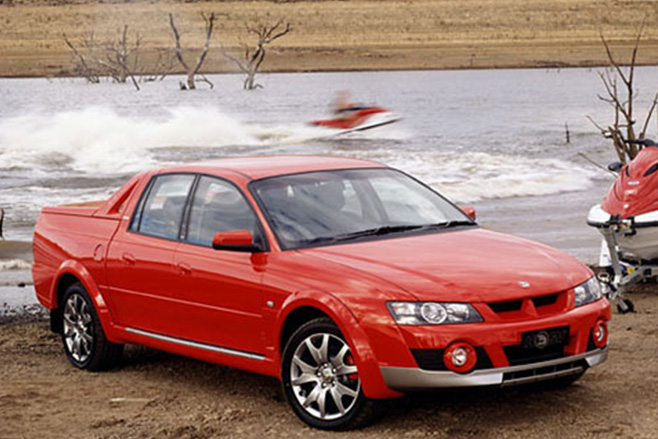
FROM PONTIAC AND BACK
HSV borrowed the famous Pontiac ‘GTO’ badge for its lesser-powered Coupe variant of the revived Holden Monaro, which was somewhat ironically retained by the US brand when it imported the Monaro from Australia in 2004. Where the Coupe GTO’s Chevrolet LS1 V8 produced 255kW, the Coupe GTS hit the magic 300kW figure with a modified version of the same engine from Chevrolet modification specialists Callaway.
POWER TO THE POMS
The GTO also found a niche in England, where it was badged the Monaro VXR by Holden’s British sister brand Vauxhall. In 2007, it was succeeded by HSV’s Clubsport, which was transformed into the Vauxhall VXR8. It was joined by the Maloo ute, which was offered by Vauxhall – along with the GTS that first made the trip to the UK in 2010.
THE $215,000 HSV
In 2003, Holden and HSV were forced embarrassingly to return paid customer deposits for a Monaro-on-steroids model called the HRT 427, after they canned a project teased the previous year at the Sydney motor show.
The belated decision came after management realised a profit wouldn’t be achievable even on a car set to cost $215,000. Race versions of the car controversially won the 2002 and 2003 Bathurst 24 Hour endurance events.
It was pricey, but a car that actually went into production would one day smash that company price record…
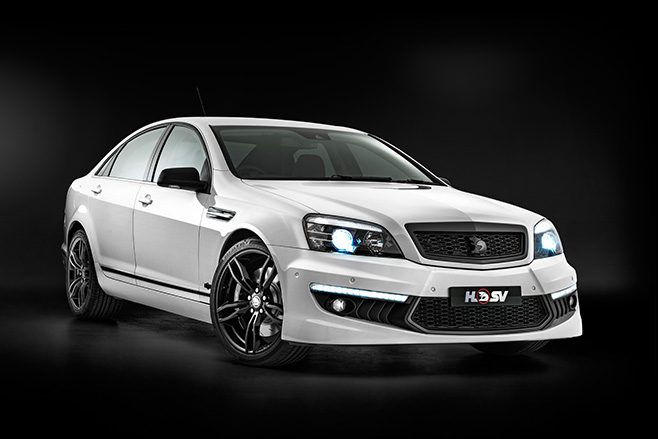
427 LIVES
In 2008, HSV celebrated its 20th anniversary by introducing the W427 – a badge that referenced both Walkinshaw and the Corvette V8 engine’s 7.0-litre size in old-fashioned cubic inches. It’s $155,500 price tag understandably made headlines considering no HSV to that point had cost more than $100,000. There was strong initial response from customers before the global financial crisis struck, reducing the planned run of 427 units to just 137.
HAPPY ANNIVERSARY
HSV loves a birthday celebration. The 30th Anniversary Range introduced in 2017 follows a trend that started with the 5th Anniversary models of 1998, and have recurred every five years since. And 1998 isn’t a misprint. In 2007, HSV decided its anniversaries should be based on 1987. The first HSV-badged vehicle (the VL SS Group A Walkinshaw) was originally shown to the public at the Sydney motor show in 1987, though no models were delivered to customers until the following year.
TRUCKS, CARAVANS AND MORE
HSV owners Walkinshaw Automotive Group, under the control of founder Tom’s son, Ryan, has expanded its interests over the years. Walkinshaw Performance aftermarket parts designed to make Holdens and HSVs go faster was a natural extension, though its Fusion Automotive business imported Tata vehicles from India.
American Special Vehicles converts big RAM utes from left-hand drive to right-hand drive for Australia. The purchase of a stake in New Age Caravans in arguably its most surprising move.
GTS-R RETURNS
HSV marked its final interpretation of an Australian-built, rear-wheel-drive Holden Commodore in style in 2017, with a return to the HSV GTS-R badge it first used in 1996.
Sitting at the head of a new family of GTS-R models was the W1, which is limited to 300 units, costs $169,990, and should prove to be the fastest Australian production road car ever built. For the future, HSV is expected to focus on models Holden imports from overseas, such as the 2018 Opel Insignia that will be rebadged Commodore here, and the Astra that’s also from GM’s German operation.
DIVERSIFY OR DIE
With the end of locally made Holden vehicles, HSV’s favourite staple for creating much loved and coveted performance cars dried up, but the company was already a long way down the road deciding how it could continue the flow of hardcore hardware.
LOADING UP WITH MODELS
Firstly, the company recognised the massive increase in one-tonne ute popularity and the migration of Australian families away from sedans into dual-cabs. Even though the market was crowded, HSV saw the opportunity to upscale its Ram operations and added a broad range of Chevrolet Silverados to it.
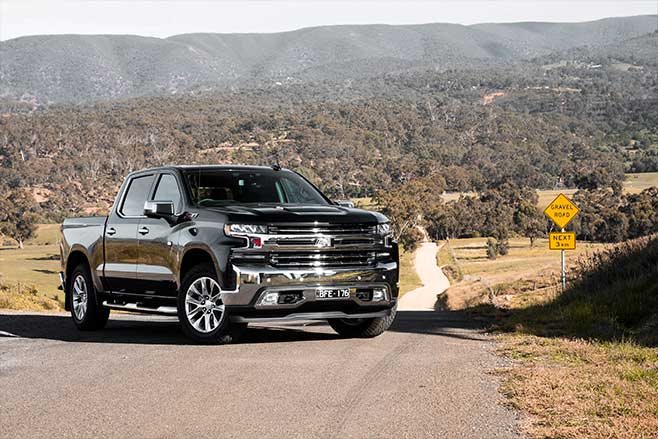
Watch next: Silverado vs Ram
Now, Australians can have the full complement of Ram trucks or a range of Silverados that recently increased to offer the 1500. The brilliant move was a dramatic backflip away from the dying large sedan, straight into one of the most lucrative markets.
In the middle of 2020, the final Colorado-based Sportscat rolled off the line, marking the very end of the Holden connection.
PERFORMANCE HERO
In 2018, HSV finally revealed one of the motoring world’s worst kept secret and the rear-wheel-drive V8 sportscar Holden had been promising Australians for years. The Camaro arrived.
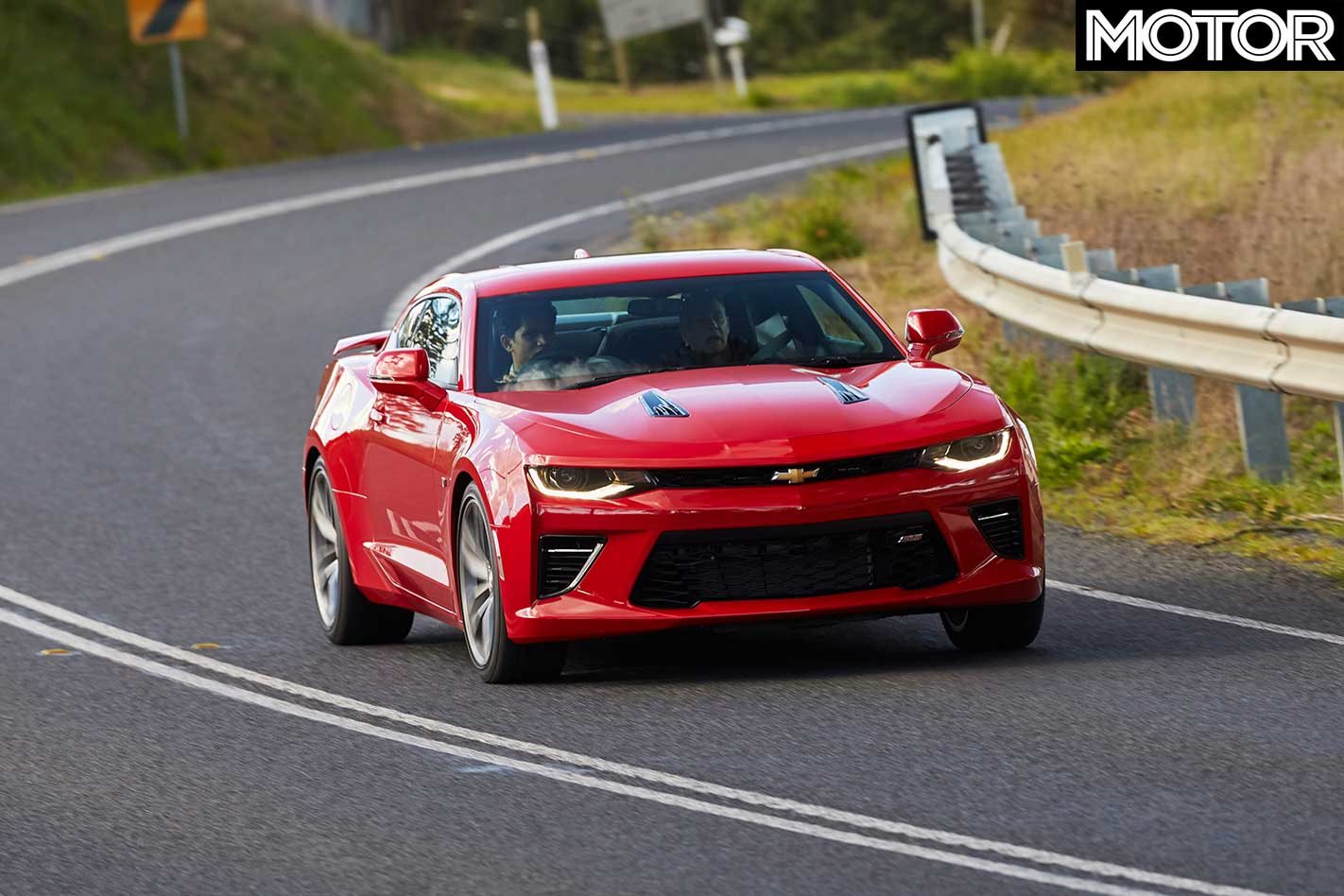
The iconic American coupe slotted into the Melbourne re-engineering outfit among the hundreds of large trucks and it likely won’t be the last.
AN UNCERTAIN FUTURE
While HSV’s very existence has always been tenuous, it has never faced a more challenging year than 2020. With the shock departure of Holden from Australia and New Zealand, the company will lose the H from its name and faces a forced rebranding by the end of the year.
Quite how the company and the team of skilled engineers will evolve once again remains to be seen.




